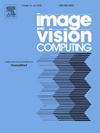EDCAANet: A lightweight COD network based on edge detection and coordinate attention assistance
IF 4.2
3区 计算机科学
Q2 COMPUTER SCIENCE, ARTIFICIAL INTELLIGENCE
引用次数: 0
Abstract
In order to obtain the higher efficiency and the more accuracy in camouflaged object detection (COD), a lightweight COD network based on edge detection and coordinate attention assistance (EDCAANet) is presented in this paper. Firstly, an Integrated Edge and Global Context Information Module (IEGC) is proposed, which uses edge detection as an auxiliary means to collaborate with the atrous spatial convolution pooling pyramid (ASPP) for obtaining global context information to achieve the preliminary positioning of the camouflaged object. Then, the Receptive Field Module based on Coordinate Attention (RFMC) is put forward, in which the Coordinate Attention (CA) mechanism is employed as another aid means to expand receptive ffeld features and then achieve global comprehensive of the image. In the final stage of feature fusion, the proposed lightweight Adjacent and Global Context Focusing module (AGCF) is employed to aggregate the multi-scale semantic features output by RFMC at adjacent levels and the global context features output by IEGC. These aggregated features are mainly refined by the proposed Multi Scale Convolutional Aggregation (MSDA) blocks in the module, allowing features to interact and combine at various scales to ultimately produce prediction results. The experiments include performance comparison experiment, testing in complex background, generalization experiment, as well as ablation experiment and complexity analysis. Four public datasets are adopted for experiments, four recognized COD metrics are employed for performance evaluation, 3 backbone networks and 18 methods are used for comparison. The experimental results show that the proposed method can obtain both the more excellent detection performance and the higher efficiency.
求助全文
约1分钟内获得全文
求助全文
来源期刊

Image and Vision Computing
工程技术-工程:电子与电气
CiteScore
8.50
自引率
8.50%
发文量
143
审稿时长
7.8 months
期刊介绍:
Image and Vision Computing has as a primary aim the provision of an effective medium of interchange for the results of high quality theoretical and applied research fundamental to all aspects of image interpretation and computer vision. The journal publishes work that proposes new image interpretation and computer vision methodology or addresses the application of such methods to real world scenes. It seeks to strengthen a deeper understanding in the discipline by encouraging the quantitative comparison and performance evaluation of the proposed methodology. The coverage includes: image interpretation, scene modelling, object recognition and tracking, shape analysis, monitoring and surveillance, active vision and robotic systems, SLAM, biologically-inspired computer vision, motion analysis, stereo vision, document image understanding, character and handwritten text recognition, face and gesture recognition, biometrics, vision-based human-computer interaction, human activity and behavior understanding, data fusion from multiple sensor inputs, image databases.
 求助内容:
求助内容: 应助结果提醒方式:
应助结果提醒方式:


